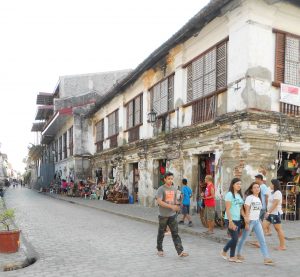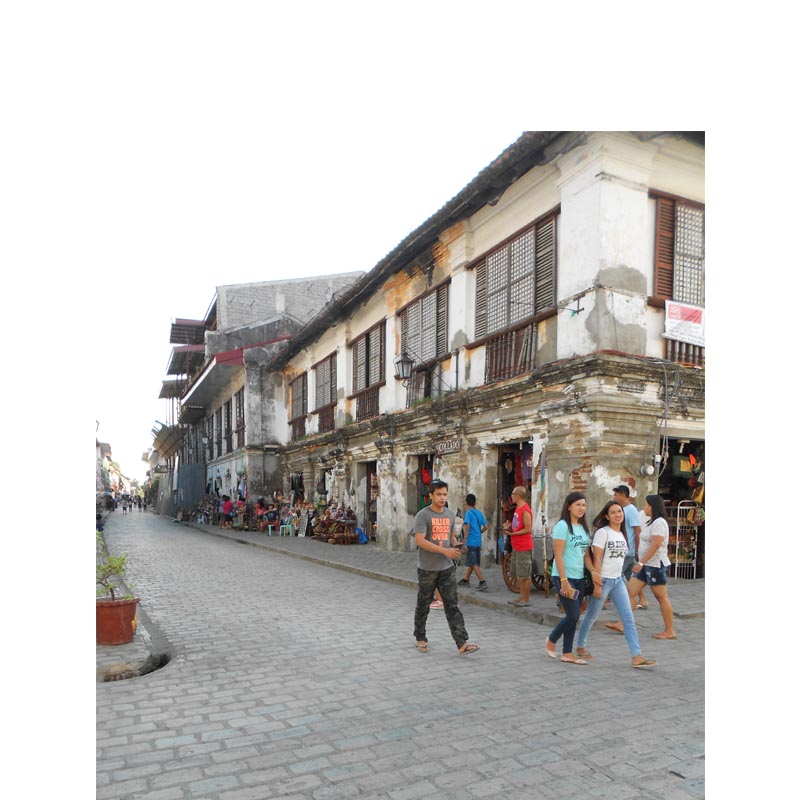 Vigan is one of the places in the Philippines that appeared in early Chinese maps and records. Vigan’s name appearS there as bi-an (美岸 beautiful shore), bit-an (密岸 dense or many shores), bit yan (密燕 dense or many swallows), bit ngan (密雁 dense or many geese). The choice of Chinese names explains well how the early Chinese traders view Vigan. It can be a beautiful shore, a dense shore, for indeed Vigan itself, though inland, is long and its outer rim is spotted with many shores. The bit yan 密燕 comes from the fact that bird’s nest (燕窩 yan o), a delicacy much sought after by the Chinese, was among the native products traded. 密雁 (bit ngan) most probably came from the spectacle the geese rising to the sky when Chinese trading vessels approach.
Vigan is one of the places in the Philippines that appeared in early Chinese maps and records. Vigan’s name appearS there as bi-an (美岸 beautiful shore), bit-an (密岸 dense or many shores), bit yan (密燕 dense or many swallows), bit ngan (密雁 dense or many geese). The choice of Chinese names explains well how the early Chinese traders view Vigan. It can be a beautiful shore, a dense shore, for indeed Vigan itself, though inland, is long and its outer rim is spotted with many shores. The bit yan 密燕 comes from the fact that bird’s nest (燕窩 yan o), a delicacy much sought after by the Chinese, was among the native products traded. 密雁 (bit ngan) most probably came from the spectacle the geese rising to the sky when Chinese trading vessels approach.
In modern times, people don’t remember the water surrounding Vigan, but it used to be a coastal trading post long before the Spaniards arrived. Chinese traders sailing from the South China Sea came to Isla de Vigan (Island of Vigan) via the Mestizo River that surrounded it. Aside from the Mestizo River, two other rivers separated Vigan as an island from the mainland – the great Abra River and the Govantes River. But it was the Mestizo River which was the key to the development of the town as early as the 16th century because large sea-going vessels could dock at the mouth of the river while the smaller boats brought the goods to the interior.
Through time, the Mestizo River became heavily silted and it no longer separated Vigan from the Ilocos mainland. The main district, however, bordering Crisologo Street, remained to be known as Mestizo District, otherwise known as Kasangleyan (the Chinese quarters or where the Chinese live) during the Spanish period.
The history of this heritage district, its strategic position as a vital crossroad where Chinese, Arabs, Mexican and European influences left their footprints, cannot be separated from its early trade connection with China. As its name implies, the district flourished because of the affluent families of mixed Chinese-Ilocano origins who settled there in later years and continued the merchant and entrepreneurial traditions. Even at the height of the Spanish tobacco monopoly, the Chinese merchants were able to circumvent the monopoly and helped the Ilocanos grow and sell a lower quality of tobacco to the upland Cordillera region.
Today, the Mestizo District is the provincial tourism center and Vigan’s historic and heritage district. It was declared a UNESCO World Heritage Site due to the excellent preservation of its old mestizo bahay na bato, cobbledstoned streets and other historical landmarks. It is the only town that was saved from destruction during World War II bombings.
The UNESCO Heritage Citation reads thus: “Established in the 16th century, Vigan is the best preserved example of a planned Spanish colonial town in Asia. Its architecture reflects the coming together of cultural elements from elsewhere in the Philippines, from China and from Europe, resulting in a culture and townscape that have no parallel anywhere in East and Southeast Asia.”
Categories
VIGAN: Cradle of history and heritage





